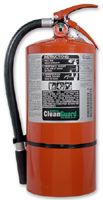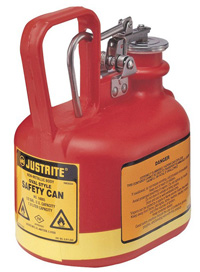| The Home page of ILPI's Safety Data Sheet (SDS) Resource, the leader in SDS information since 1995! | |
| The history and philosophy behind this resource. | |
| A curated collection of books and reference materials concerning Safety Data Sheets and closely related topics. | |
| Paste your plain text SDS into the SDS-Demystifier, and it will be converted into a hypertext-enriched document with links to detailed explanations of each key term. | |
| An extensive list of frequently asked questions about Safety Data Sheets including regulations, content, compliance, and more. | |
| A humorous take on Safety Data Sheet jargon. Fill in the blanks on our entry form to generate a personalized Unsafety Data Sheet to share with your coworkers. | |
| Since 1995, we've maintained this massive curated list of the best places to find Safety Data Sheets on the Internet. | |
| You are here! Way more than a glossary, this hypertext-enhanced resource covers hundreds of SDS-related terms and expert knowledge. Each entry includes both the SDS relevance and links to additional authoritative resources. | |
| Archived results of Safety Data Sheet related polls taken by some of our millions of site visitors | |
| The OSHA regulations behind SDS regulations, including the inspection guidelines and over 400 official interpretations letters under the Hazard Communication Standard | |
| Commercial suppliers of SDS authoring and management software as well as cloud compliance services. | |
| Commercial companies that will create SDS's for your specific needs as well as SDS translation companies. |

Safety signs, banners, and scoreboards? Get yours at Safety Emporium!
Definition
Carbon tetrachloride, also known as tetrachloromethane (CAS # 56-23-5), is a clear, colorless, non-flammable, halogenated, organic liquid with a distinctive odor. It is sometimes called "carbon tet" in lab slang. The chemical formula is CCl4 and two equivalent representations of the molecular structure are shown below. The central carbon atom is attached to four chlorine atoms and the molecular shape is tetrahedral:

Additional Info

Protect sensitive electronic and laboratory equipment with Ansul CleanGuard extinguishers from Safety Emporium.
According to the NTP 15th Annual Report On Carcinogens, carbon tetrachloride is "reasonably anticipated" to be a human carcinogen. In December 2022, the US EPA revised its TSCA risk determination for carbon tetrachloride, noting that it "presents an unreasonable risk of injury to human health when evaluated under its conditions of use". Therefore, avoid contact with it whenever possible.
Carbon tetrachloride was formerly used in a wide variety of applications before the carcinogenic hazard was well-known. One such use was as a fire extinguishing agent. Besides the carcinogenic hazard this poses, an additional danger is that carbon tetrachloride can form phosgene gas (Cl2CO, used as a chemical weapon in World War I) when used on electrical fires. If you ever come across a carbon tetrachloride extinguisher dispose of it as a toxic waste and replace the extinguisher with an appropriately selected model.
Carbon tetrachloride was widely used as an industrial solvent before its health hazards were well-known. It is sometimes used as an intermediate (ingredient) in the manufacture of other chemicals, and it has a terrific degreasing ability. This latter property also resulted in its use by the dry cleaning industry in the 20th century, but this practice has long been abandoned.
Regulations and taxes have helped to phase out the widespread use of carbon tetrachloride in most "first world" nations, however you are still likely to encounter carbon tetrachloride in academic and research laboratories.
Carbon tetrachloride has a long atmospheric lifetime (approximately 85 years) and is both a highly effective ozone-depleting substance and a potent greenhouse gas. The phaseout of this substance on an industrial scale could not have come too soon! However, recent studies have shown that large, unexplained emissions of this chemical persist. A 2016 study suggests these emissions may be byproducts of the production of chlorinated organic chemicals.
Although carbon tetrachloride is a known human carcinogen, in early 2020 the US EPA proposed a draft risk evaluation that "found no unreasonable risks to the environment under any of the conditions of use or to workers when appropriate personal protective equipment is used" while simultaneously stating "occupational non-users (those workers in the vicinity of the chemical's use but not directly working with the chemical) could be adversely affected by carbon tetrachloride under certain conditions of use." The occupational user safety claim is ignorant - relying on PPE alone flies against well-established best practices for reducing hazards in the workplace which involve eliminating a significant hazard or substituting a safer (non-carcinogenic!) material. Further, the draft completely ignores the global warming potential of carbon tetrachloride.
Books Available
NOTE: We may collect a share of sales or other compensation from the links in the following list:
- "Environmental Soil Remediation and Rehabilitation: Existing and Innovative Solutions (Applied Environmental Science and Engineering for a Sustainable Future) 1st ed", Hardcover, 2020, 441 pages. Estimated price $158.64. Info and/or order.
- "An Inconvenient Truth: The Planetary Emergency of Global Warming and What We Can Do About It", Paperback, 2006, 328 pages. Estimated price $12.54. Info and/or order.
- "Non-halogenated Flame Retardant Handbook 2nd Edition", Hardcover, 2020, 608 pages. Estimated price $178.84. Info and/or order.
- "Halogen Bonding I: Impact on Materials Chemistry and Life Sciences (Topics in Current Chemistry)", Hardcover, 2015, 280 pages. Estimated price $238.02. Info and/or order.
- "The 2023-2028 World Outlook for Halogen-Free Flame Retardants", Paperback, 2022, 307 pages. Estimated price $995.00. Info and/or order.
SDS Relevance

Store and dispense flammable liquids safely with flammable liquid safety cans from Safety Emporium.
Section 9 (physical and chemical properties) of Safety Data Sheets will list the solubility of the material in various solvents, if known. Carbon tetrachloride is often used a reference in this regard because it has a very symmetric molecular shape and distribution of electons, something chemists call a "non-polar" molecule. Non-polar molecules tend to dissolve other non-polar materials fairly well, but generally do not dissolve those that are polar.
If you are actually using carbon tetrachloride in your workplace, definitely have an SDS on hand and take every precaution you can to eliminate and/or minimize its use. If you must use this material, consult Section 8 (exposure controls/personal protection) of the SDS for specific precautions. For example, use appropriate personal protective equipment (PPE) and try to confine the material to a fume hood if possible.
Two recent literature reports of significant injuries caused by injection of chemically-related methylene chloride (dichloromethane) can be found in our necrosis entry. Therefore, it would be prudent to assume that carbon tetrachloride carries a similar risk until proven otherwise. In neither case did the SDS address injection as a route of exposure, underscoring why it is critical to always maintain proper chemical hygiene practices regardless of what the SDS says (or doesn't say) in Section 11 (toxicological information). Remember, HCS 2012 does not require testing if there is no data; chemicals are presumed innocent until proven guilty.
Further Reading
- Download the NTP report on carbon tetrachloride in PDF format (166K download). Includes lots of interesting data.
- The NTP's Report on Carcinogens 15 Edition entry for carbon tetrachloride.
- The ATSDR's ToxFAQ on carbon tetrachloride.
- The US EPA's hazard summary sheet for carbon tetrachloride.
- The US EPA's Drinking Water Regulations and Contaminants.
- NIH's PubChem entry on carbon tetrachloride contains lots of key data that includes the original provenances.
- The International Programme On Chemical Safety's Report on Carbon Tetrachloride.
- Sigma-Aldrich's SDS for carbon tetrachloride.
- Solubility and Structure at Chemistry LibreTexts discusses solvent polarity and solubility.